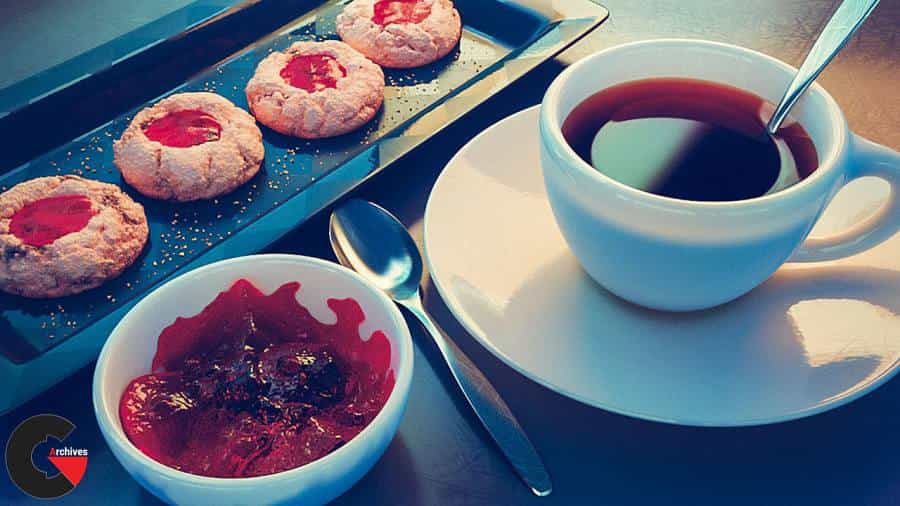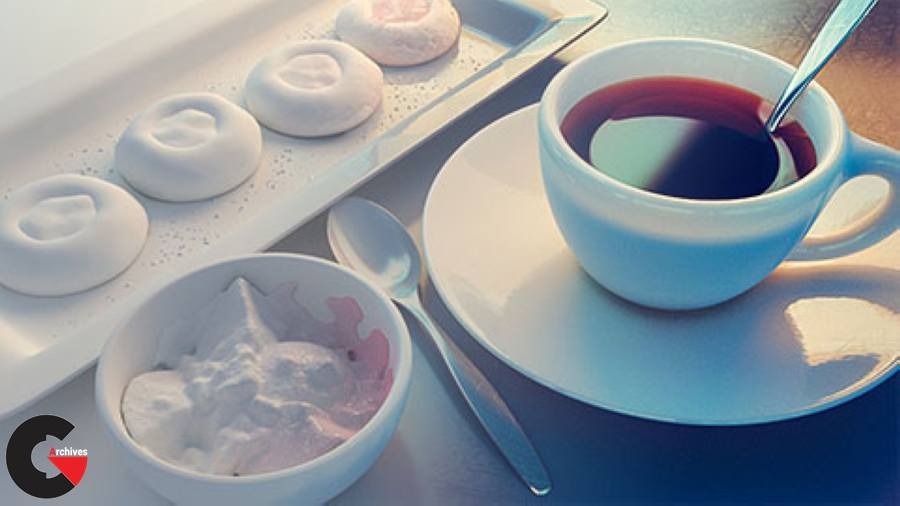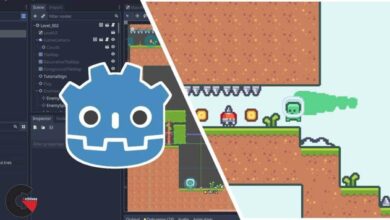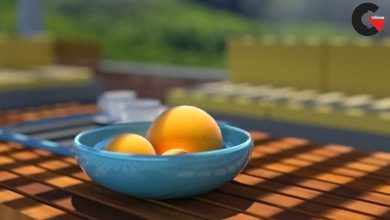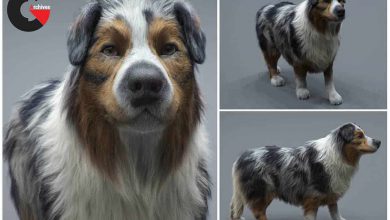Tea and Cookies with Houdini
 Tea and Cookies
Tea and Cookies
Tea and Cookies with Houdini : The aim of this commercial training is to take you through the process of creating the “Tea and Cookies” image, all the way from modeling to render and even the final color grading entirely in Houdini from scratch. This should help you gain a better perspective towards using Houdini as your primary tool for creating 3d content.
The training will take you through various aspects of Houdini including, Polygonal Modeling, Procedural modeling, Dynamics, Shader Building, Lighting, Rendering and Color Grading.
The training is split into to parts, each part is available separately. Part 1 will cover the modeling of the entire scene and Part 2 shall deal with the lighting, shading and rendering the final image. Given below are the details regarding the two sections.
part 1 – modeling
Content Details – 9 Video Chapters (with Audio)
Duration – 2 hrs 50 mins
lesson plan
- Modeling the Jam bowl – Basic Introduction to poly modeling in Houdini
- Modeling the spoon – Using attributes and ramps to control poly modeling
- Modeling the Cup – procedural modeling of the cup. In 3b we will model the saucer
- Modeling the Tea – Extracting the tea liquid surface from the cup geometry
- Modeling the Cookie – Painting Attributes and adding displacement using VOPSOP to add details
- Copy stamping and Cookies – Understanding the basics of copy stamping to creating copies of the cookie
- Modeling the Tray and the Crumbs – Using scatter and voronoi fracture for modeling
- Modeling the Jam – Using RBDs and VDB toolset for modeling
part 2 – light, shade and render
Content Details – 11 Video Chapters (with Audio)
Duration – 2 hrs 33 mins
lesson plan
- Lighting the scene – Adding lights and setting up the camera and the render engine
- HDRI – Adding an HDR for reflections and additional information about lights
- Material Basics – Understanding the capabilities and limitations of the Mantra Surface Shader
- Steel Material – Using the Material Shader builder to create the Steel shader and using textures to control various channels
- Plastic Tray – Making a plastic material for the tray. Learning how to use multiple UV channels. Adding bump mapping
- Porcelain – Using SSS to create a porcelain shader.
- Flooring material – Learn how to mix multiple texture maps to create complex surfaces.
- Tea Material – Controlling material properties via Geometry Attributes. Using Absorption to create liquid shader
- Jam Material – Creating a shader for the jam. Using Caustics for better lighting
- Cookie Shader – Creating complex displacement to make the cookie material
- Color Grading – Defining the look of the final render by using the compositing section of Houdini
Pictures of this course :
lB6MwSwNNIYYHz66UqInBRH/video/12301
Direct download links 1.13 GB :
Direct download link reserved for subscribers only This VIP
Dear user to download files, please subscribe to the VIP member
- To activate your special membership site, just go to this link and register and activate your own membership . >>>register and activate<<<
- You can subscribe to this link and take advantage of the many benefits of membership.
- Direct downloads links
- No ads No waiting
- Download without any limitation ، all content in website
CGArchives Is The Best
Review
Review
Review this tutorial
